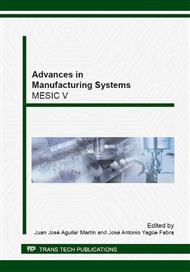p.133
p.139
p.145
p.157
p.163
p.171
p.177
p.183
p.189
Teaching Mechanism Calibration to Engineering Students
Abstract:
A new practical application for teaching mechanism calibration to engineering students in senior undergraduate courses is presented in this paper. The modelling, characterization and calibration of kinematic mechanisms is performed. This application presents a special interest in kinematic mechanisms in areas such as industry and research. The application interface allows the students to carry out the different steps of the calibration procedure in an easy way, to change different variables and to analyze results. This application therefore presents an important utility as a teaching tool for the learning process and analysis of the different steps in the mechanism optimization. The application developed allows students: to design their own mechanisms and to analyze the mechanism workspace by changing some design parameters, to test accuracy and repeatability of mechanism components, to introduce the mechanism kinematic model, to evaluate the mechanism performance before calibration, to calibrate the mechanism and, finally, to analyze the improvement in the system accuracy.
Info:
Periodical:
Pages:
171-176
Citation:
Online since:
June 2014
Keywords:
Price:
Сopyright:
© 2014 Trans Tech Publications Ltd. All Rights Reserved
Share:
Citation:


